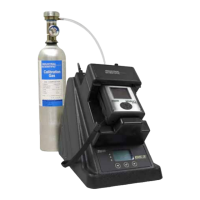Why are Bump/Calibration certificates blank when printed from Industrial Scientific DS2 Docking Station?

Why are Bump/Calibration certificates blank when printed from Industrial Scientific DS2 Docking Station?
| Charging Capability | Yes |
|---|---|
| Communication Interface | Ethernet, USB |
| Data Logging | Yes |
| Connectivity | Ethernet, USB |
| Power Source | AC Adapter |
| Power Input | 100-240V AC, 50-60Hz |
| Calibration | Automatic |
| Bump Testing | Automatic |
| Operating Temperature | 0°C to 40°C (32°F to 104°F) |
| Storage Temperature | -20°C to 50°C (-4°F to 122°F) |
| Gas Supported | Varies by detector |
Specifies the minimum system requirements for installing the DS2 software.
Provides instructions for installing essential Windows components for DS2.
Details the procedure for installing the core DS2 Docking Station Server software.
Guides users through selecting and preparing the database for new DSS installations.
Explains how to install the DSSAC software for managing the DS2 system.
Covers the network configuration for assigning static IP addresses to servers or PCs.
Details how to configure the Windows firewall to allow DS2 communication.
Provides step-by-step instructions for creating new user accounts in DSSAC.
Guides the user through the initial setup process for a docked instrument.
Describes how to view and manage the properties of a docked instrument.
Covers viewing and managing calibration data for instruments and sensors.
Details how to view and manage bump test data for instruments and sensors.
Provides step-by-step instructions for preparing the IDS hardware for operation.
Details the process of configuring gas connections for calibration and bump tests.
Guides on how to initiate a bump test manually from the IDS menu.
Explains how to initiate a calibration manually from the IDS menu.
Guides on configuring the IDS cluster in DSSAC for server recognition.
Explains how to configure default alarm thresholds for instruments and sensors.
Details how to define default calibration gas concentrations for sensors.